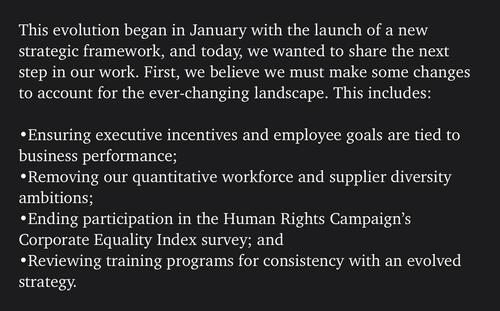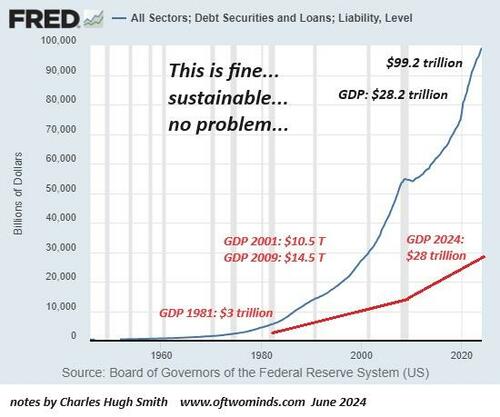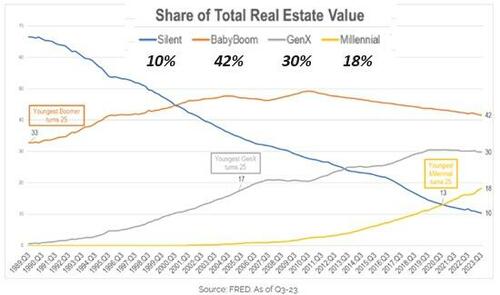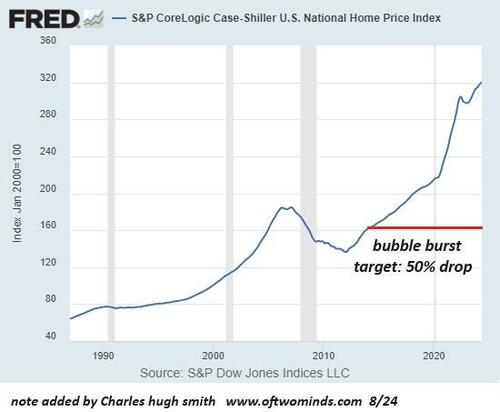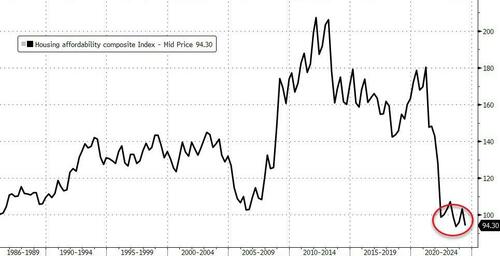Authored by Susan Crabtree via RealClearPolitics,
Three weeks ago, Acting Secret Service Director Ronald Rowe angrily pushed back on senators’ calls to immediately fire or discipline key agents directly responsible for the security failures that led to the assassination attempt against former President Trump at last month’s campaign rally in Butler, Pennsylvania.
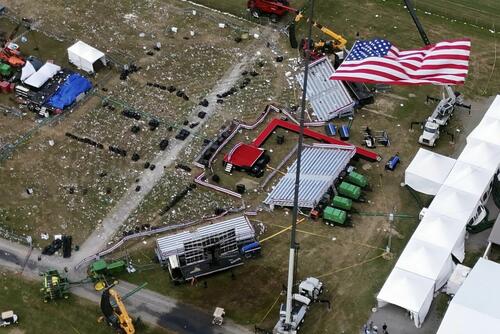
Since that time, Secret Service leaders have placed several members of the Pittsburgh Field Office on administrative leave, according to three sources in the Secret Service community.
(Administrative leave occurs when a federal employee temporarily leaves their position and work duties – either because of a misconduct investigation or medical or mental health issue. These employees usually still receive pay and benefits, but those decisions are left to the discretion of agency leadership.)
While these members of the Pittsburgh Field Office were placed on leave, a different set of agents, several assigned to Trump’s permanent protective detail, are still on the job providing Trump protection, the sources say. They remain operational even though they too were deeply involved in devising the Butler rally’s security plan.
The differing treatment of the two teams is spurring internal dissension and speculation that the Pittsburgh office could bear the brunt of the serious security failures that day, even though there’s plenty of blame to go around.
During a joint Senate committee meeting July 30, Rowe said he couldn’t understand or defend why the roof where shooter Thomas Crooks fired from wasn’t better secured. He said the Secret Service is investigating whether any employees broke the rules or didn’t follow established protocol to protect obvious vulnerabilities. If so, he said they would be held accountable through the agency’s disciplinary process and face punishment, including termination.
Yet, Rowe and other senior officials back in Washington headquarters should share the blame, these sources argue. The agency’s top brass were almost certainly involved in declining at least some of the security assets requested for the Butler rally despite a heightened threat level brought on by a specific Iranian assassination plot against Trump.
Former Secret Service Director Kimberly Cheatle resigned in late July amid bipartisan outrage over her lack of transparency about the rally security failures. But critics in Congress and the Secret Service community are calling for more accountability in the wake of the worst security failure since President Ronald Reagan was shot in 1981.
Dan Bongino, a popular conservative personality who spent 11 years in the Secret Service, has blasted his former agency’s “apocalyptic security failure” and called for a full house-cleaning of the upper leadership ranks in its Washington headquarters. Rowe, he said, is just as bad, if not worse than Cheatle because he was her hand-picked deputy and played a key role in her management decisions.
“My Secret Service colleagues I worked with, where nothing like this ever happened at our advances, are horrified at Ron Rowe, ashamed at what this agency has become,” he said in on his podcast the day after Rowe testified before the Senate. “… I’m not talking about a small cadre of them. I’m talking about a big group of former agents [who] are on fire about what happened here – they are horrified about what’s going on with this agency.”
Other current Secret Service agents, including one who requested anonymity for fear of reprisal, pinned the failures at Butler directly on Rowe and other top leaders alleged ties because their decisions leading up to the July 13 rally set the rank-and-file agents up for failure.
“Leadership’s mismanagement of technology and personnel are what led to the failures in Butler, but they are not the ones being held accountable,” a source in the Secret Service community told RealClearPolitics.
The FBI arrested Asif Merchant, a Pakistani man with to Iran, one day before the Butler rally. Merchant was charged with a plot to carry out political assassinations on U.S. soil, including against Trump.
The arrest comes two years after U.S. officials disrupted another Iranian scheme aimed at former Trump National Security Adviser John Bolton. Trump and his national security team have faced threats from Iran since Trump ordered the killing of Iranian Gen. Qasam Soleimani in early January 2020.
Mid-level Secret Service managers based in D.C. routinely reduce the level of security assets as a way to cut costs. There’s even greater pressure to reject asset requests during presidential campaign years when agency resources are especially stretched thin because there are multiple candidates to protect.
Because of the heightened Iranian threat against Trump, those decision wouldn’t just be made by mid-level Secret Service managers but likely would involve top agency officials too, the sources argued. In the case of the Butler rally, it was the first time agency leaders approved counter snipers for a Trump reelection event, but they still only allotted two counter sniper teams rather than the four teams requested, multiple sources have told RCP.
Because of the sniper shortage, the Secret Service was forced to ask local law enforcement to man the rooftop where 20-year-old would-be assassin Thomas Crooks fired off his shots at Trump and the crowd, killing firefighter Corey Comperatore, who was attending the rally with his family.
Exactly why that rooftop was not adequately covered remains a key question in the ongoing investigation with the Secret Service and local law enforcement continuing to trade accusations over that glaring failure.
Other whistleblowers have come forward to complain that Secret Service leaders did not allocate a counter-surveillance unit, roaming agents who work to find and intercept suspicious people or fortify vulnerable areas during a rally. If they had, these whistleblowers argue, those CSU teams would have intercepted and questioned Crooks as soon as he pulled out a range finder and held it up to the crowd.
Sen. Josh Hawley in early August sent a letter to Rowe saying he had received detailed information personally laming him for directing “significant cuts” to the Countersurveillance Division, a department that performs threat assessment evaluations of events sites before the events occur and did not perform its typical evaluation of the Butler site and was not present that day. An unnamed whistleblower further alleged that Rowe directed a 20% reduction in the CSD’s manpower, an assertion that, if proven, would undercut Rowe’s repeated denials that he wasn’t involved in any decisions rejecting requests for added security for Trump over the last two years.
In an all-hands conference call last week, Rowe committed to a complete “paradigm” overhaul at the agency and said he is making headway in pressing for major budget increases. He also pledged to jettison the long-term approach of stretching resources too thin – what is known within the agency as “doing more with less” – and to improve the Secret Service’s technological capability to adapt to “constantly evolving” threats.
“We can no longer operate with that mindset,” Rowe told the agents during his address to every employee. “We can no longer wear our people down.”
Rowe argued that the near-assassination of Trump served as a wake-up call to the agency – “an opportunity to examine our own paradigm and examine our own methodologies, to challenge assumptions, to look at the new dynamic threat environment we’re operating in, look at the demand in which we’re placing on our people.”
Trump’s security detail, a 60-member team dedicated to protecting the former president, has faced the toughest schedules and heaviest workloads over the last year of any Secret Service division or detail. The agents have endured long hours, often working seven days a week in a row before taking time off. The Trump detail also has taken on more of the responsibility for creating and executing the security plans for rallies, these sources said, a job that was always shared with the local field office closest to each rally. But over the last year, as Trump has faced heightened threats, his detail has taken on more and more responsibility for security planning and decisions at rallies, these sources say.
For instance, the site agent, the individual charged with devising most of the security plan for the event, was a member of the Trump detail for the Butler rally. But the lead agent, who typically oversees security at the entire sequence of events – from the airport arrival to the rally to the hotel stay to airport departure – was a member of the Pittsburgh Field Office. During final preparations for a rally, the site agent and lead agent join forces in conducting walk-throughs of the security plans with supervisors from each of their teams.
Because members of the Pittsburgh Field Office shared the responsibility with the individuals from the Trump detail, sources are questioning why no one from the Trump detail has been put on administrative leave while several of their Pittsburgh counterparts have been. Even the innermost ring of security – those agents on the Trump detail who quickly used their bodies as human shields to protect Trump – are still on the job despite the obvious trauma of going through such a stressful event.
Secret Service spokesman Anthony Guglielmi didn’t respond to questions from RealClearPolitics about that disparity. He also didn’t answer several other detailed questions about the agency’s administrative leave and disciplinary policies.
“The U.S. Secret Service is committed to investigating the decisions and actions of personnel related to the event in Butler, Pennsylvania and the attempted assassination of former President Donald Trump,” Guglielmi said in a statement. “The U.S. Secret Service’s mission assurance review is progressing, and we are examining the processes, procedures and factors that led to this operational failure.”
“The U.S. Secret Service holds our personnel to the highest professional standards, and any identified and substantiated violations of policy will be investigated by the Office of Professional Responsibility for potential disciplinary action,” he added. “Given this is a personnel matter, we are not in a position to comment further.”
During Rowe’s July 30 Senate testimony, the acting director and Hawley got into a shouting match over the agency’s failure to fire anyone, including those responsible for the failure to surveil the rooftop where Crooks opened fire.
“You’re asking me, Senator, to completely make a rush to judgement about somebody failing. I acknowledge this was a failure,” Rowe said during the questioning.
“Is it not prima facie that somebody has failed? The former president was shot,” Hawley shot back.
Rowe responded that he had “lost sleep” over the security failures that day and assured Hawley that he would hold people accountable “with integrity” and not “rush to judgement.”
“Then fire somebody to hold them accountable,” Hawley demanded.
Rowe countered that he needed to allow the FBI investigation to continue to gather all the facts and determine culpability and argued that there were likely several people and factors to blame for the failures, not just one scapegoat.
In the wake of the assassination attempt, whistleblowers have come forward to share with RCP what they describe as a corrosive culture of fear, favoritism, uneven disciplinary action, and retribution they say has plagued the agency for years, harming its core protective mission. The uneven discipline and lowering of hiring standards because of a staffing shortage has led to several embarrassing security breaches and misconduct scandals in recent years, sowing distrust and resentment.
Rowe has pledged to hold those responsible for the security failures in Butler accountable, but others argue his close friendship with Tim Burke, who heads the Pittsburgh Field Office, could complicate that task.
Just last year, a former member of that Pittsburgh office won a complaint he filed with the U.S. Equal Employment Opportunity Commission, a federal agency that enforces workplace discrimination laws, according to two sources in the Secret Service community.
The special agent complained to Burke that an office leader was sexually harassing another employee, but Burke said he didn’t believe the accusations and advised the employee to drop the matter. After the agent insisted his charges were accurate and filed formal complaints within the Secret Service, he said Burke, with the blessing of top Secret Service leaders, unfairly retaliated against him for the disclosure, putting him on administrative leave and downgrading his salary from a GS14 level carrying a salary of $104,604-$135,987, to a GS13 level, which ranges between $88,520 and $115,079. Such disciplinary action would require approval from top agency leaders, and Rowe likely knew about it even if he didn’t sign off specifically on the demotion.
Yet, just months after filing the EEOC complaint, the agent provided evidence of his sexual harassment claim and won his case, quickly regaining his GS14 status, according to three sources in the Secret Service community. He also was allowed to relocate away from the Pittsburgh Field Office. It’s unclear if Burke, who is close friends with Rowe and is generally liked by top Secret Service leaders, faced any disciplinary action for failing to take the charges seriously.
In another alarming incident that could have implications for the Iranian plot against Trump, two men of Pakistani heritage were arrested and charged with posing as Department of Homeland Security officers in Washington and duping four Secret Service agents charged with protecting President Biden and his family. According to federal prosecutors, the imposters provided the Secret Service agents with tens of thousands of gifts, including rent-free apartments, in a two-year scheme that began in February 2020 while Trump was still in office,.
At one point after Biden took office, one of the Pakistani men, Arian Taherzadeh, offered to buy a $2,000 assault rifle for an agent assigned to first lady Jill Biden’s protective detail, according to the legal filings. One of the men, Haider Ali, told witnesses he had connections to intelligence agencies in Pakistan, and he also had several visas issued by Pakistan and Iran, prosecutors said.
“Taherzadeh and Ali have attempted to use their false and fraudulent affiliation with DHS to ingratiate themselves with members of federal law enforcement and the defense community,” David Elias, an FBI agent, wrote in the affidavit.
Yet, Elias did not say why the men orchestrated the elaborate plan to impersonate DHS agents and cozy up to members of the presidential protective Secret Service detail. Prosecutors said they used their false identities to obtain security footage of the apartment building, as well as a list of the building’s residents and contact information.
The Secret Service agents implicated in the scheme were placed on administrative leave, but it’s unclear what disciplinary action, if any, was taken against them.
Susan Crabtree is RealClearPolitics’ national political correspondent.






